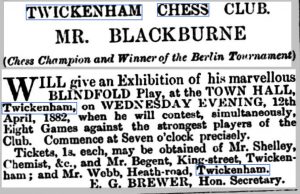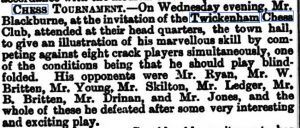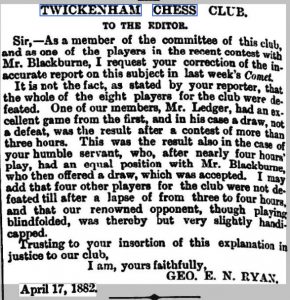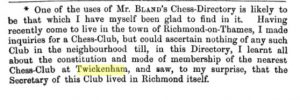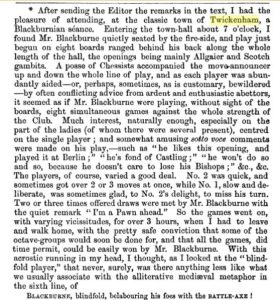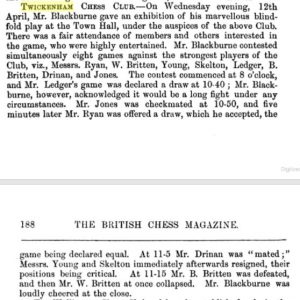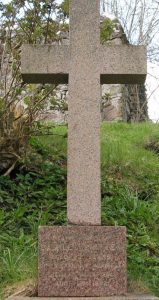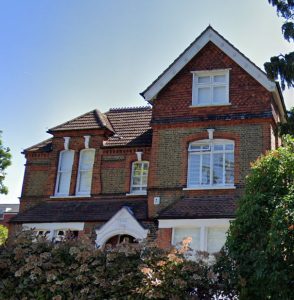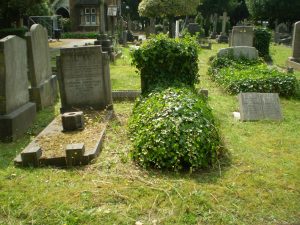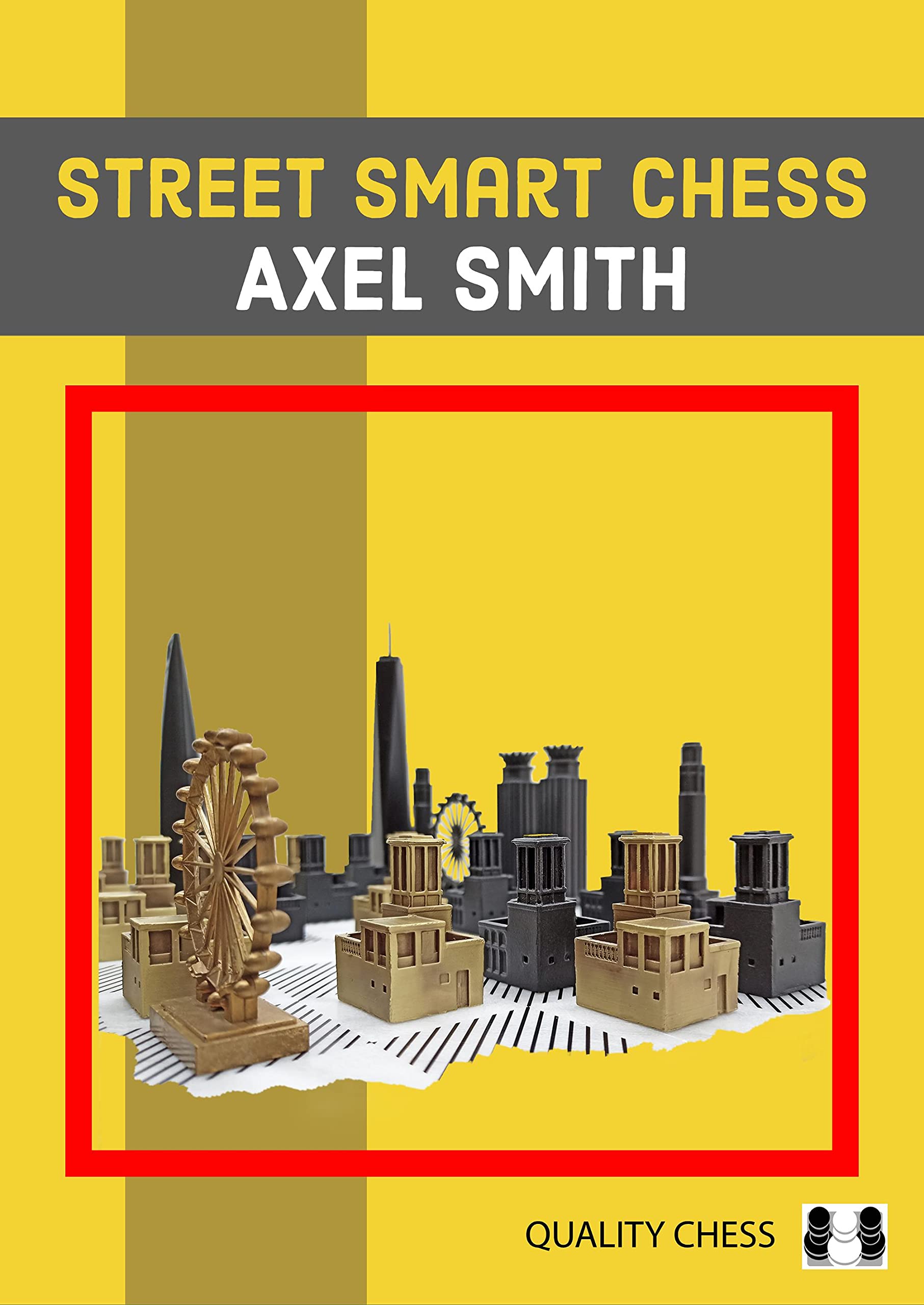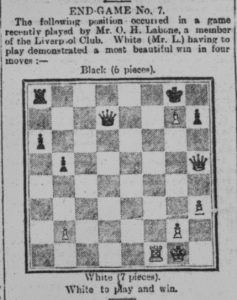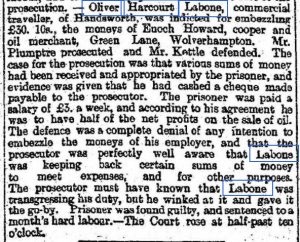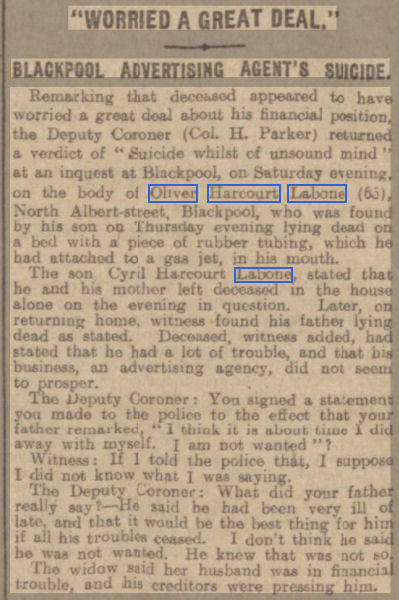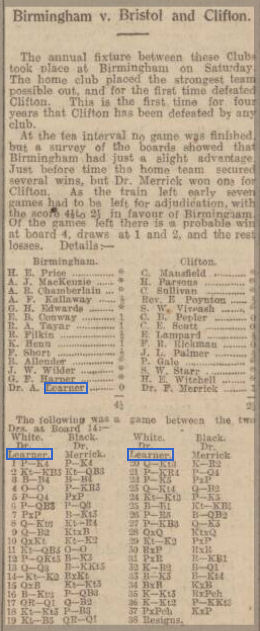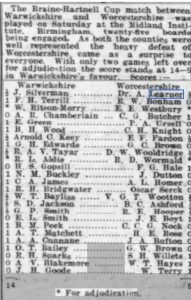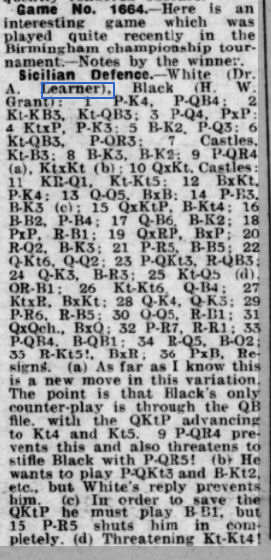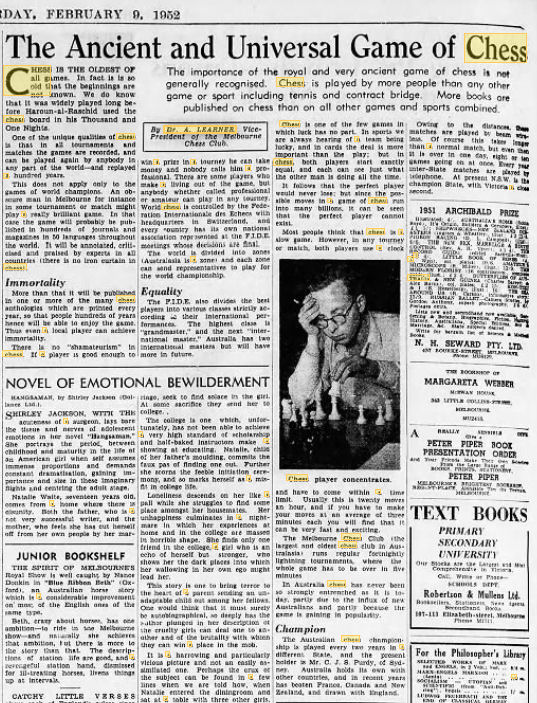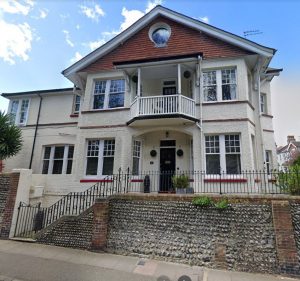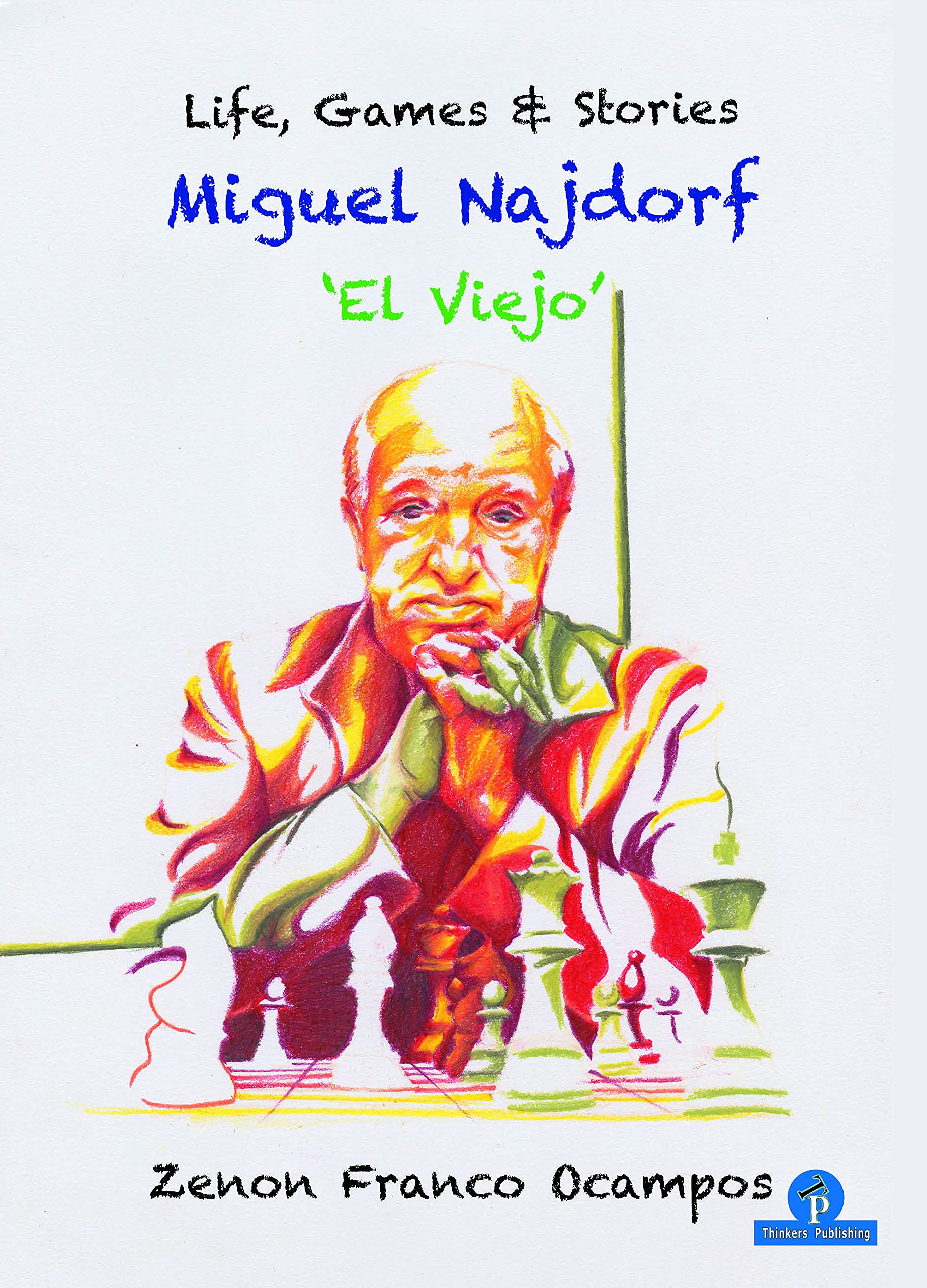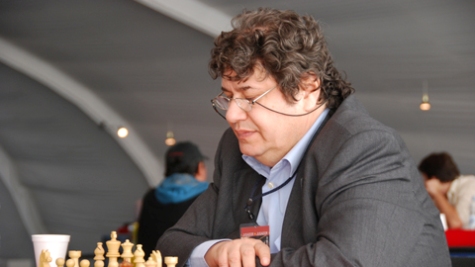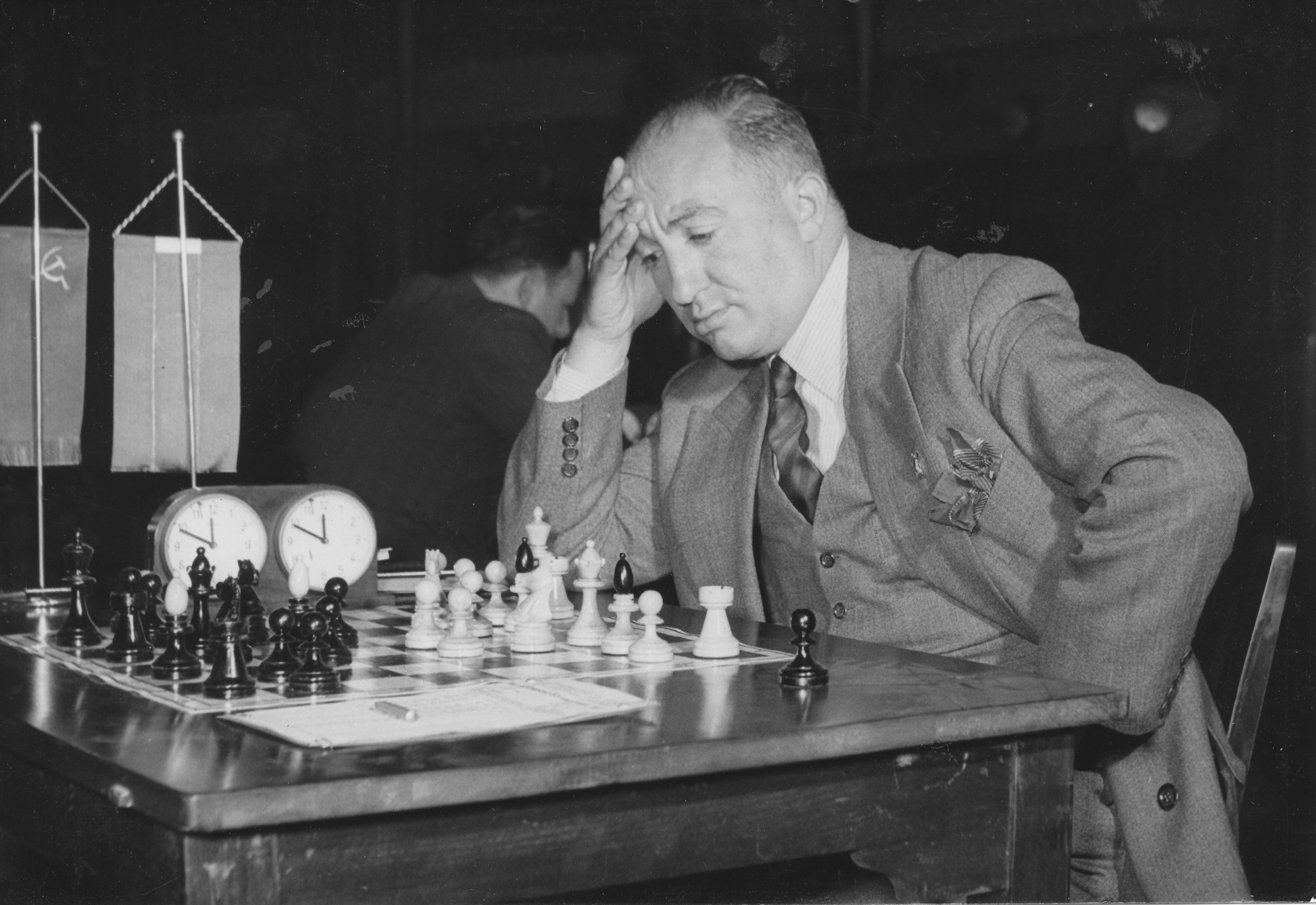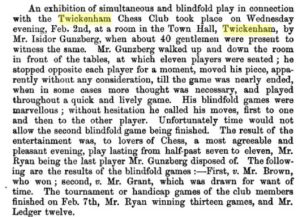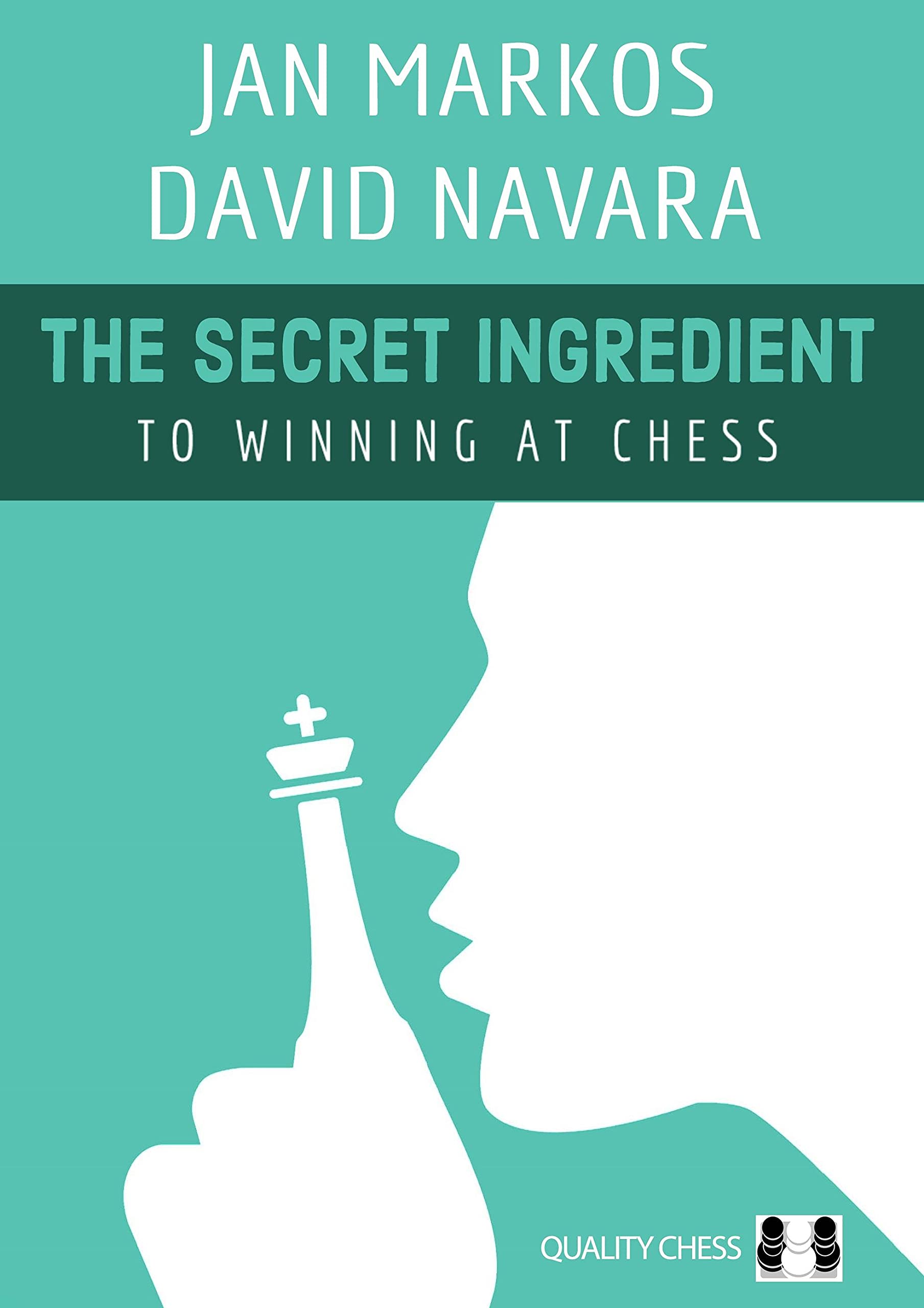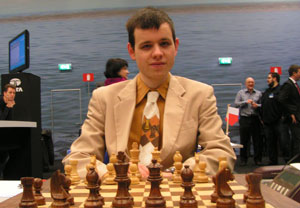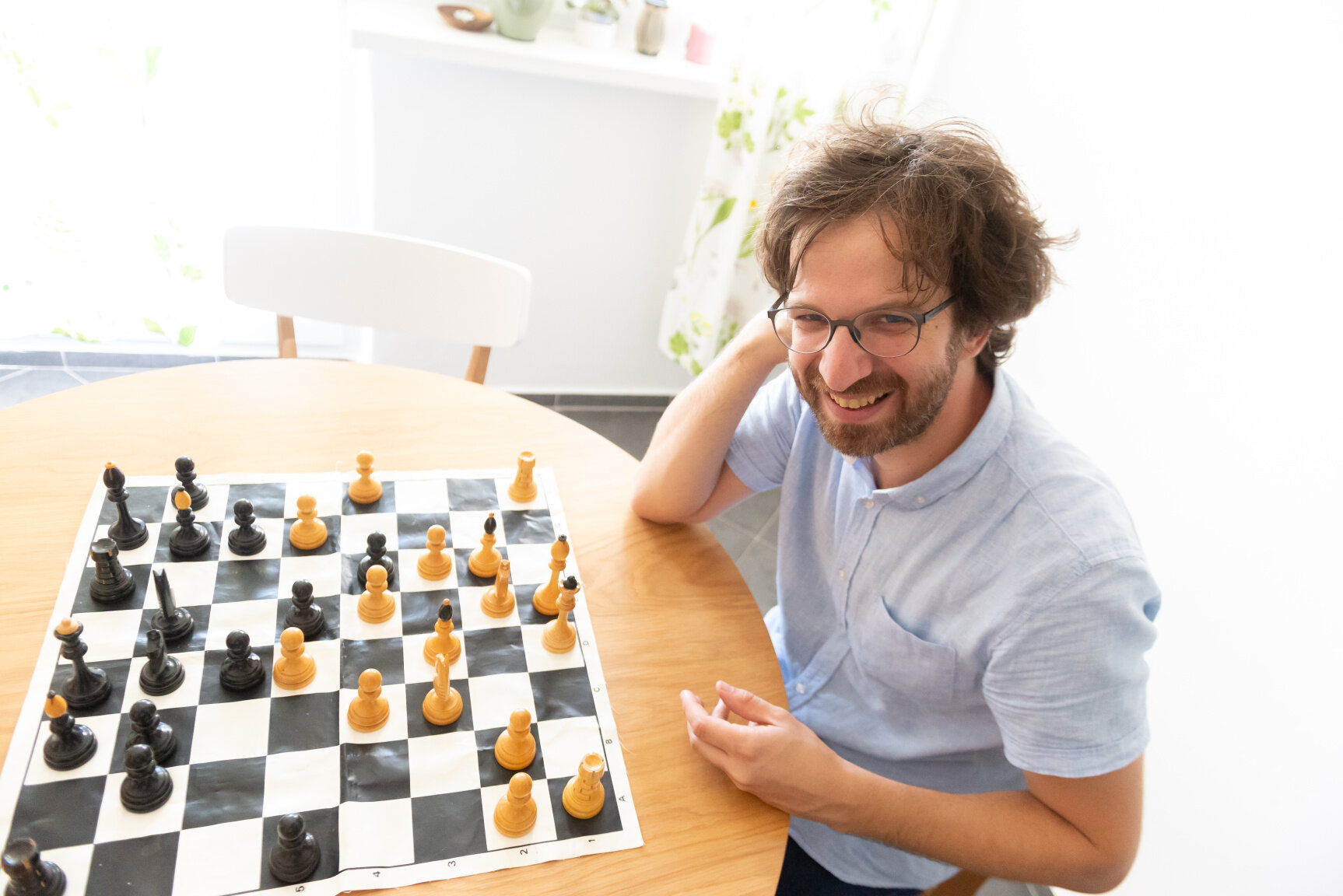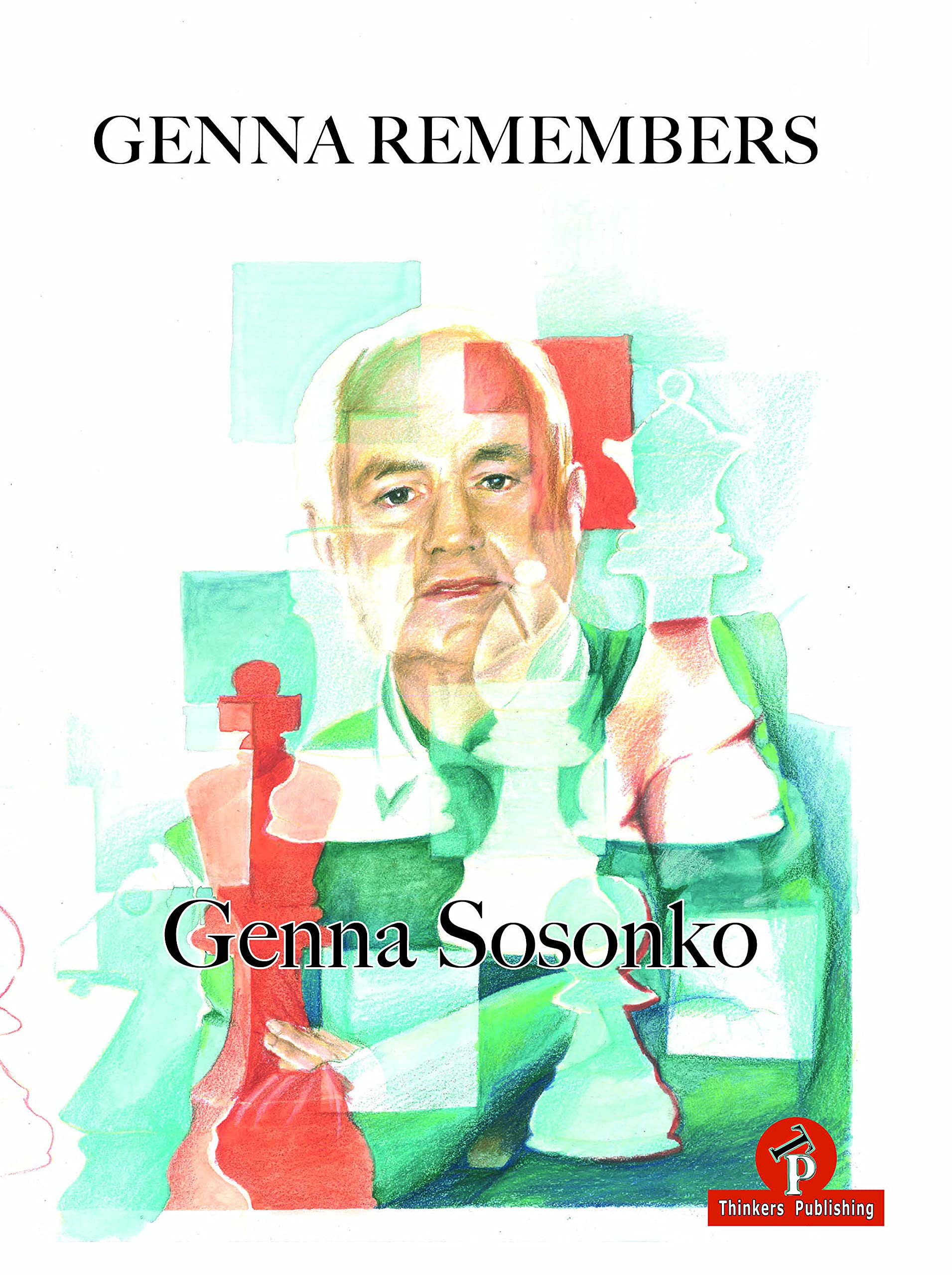
From the author’s lengthy introduction:
Half a century ago I left a country, the red color of which dominated a large portion of the world map. One way or another, the fate of almost every single person described in this book is forever linked with that now none-existent empire. Many of them ended up beyond its borders too. Cultures and traditions, and certainly not least of all a Soviet mentality, couldn’t have just left them without a trace. Having been transplanted into a different environment, they had to play the role of themselves apart from certain corrections with regard to the tastes and customs of a new society. Nevertheless, every one of them, both those who left the Soviet Union, and those who stayed behind, were forever linked by one common united phenomenon: they all belonged to the Soviet school of chess.
This school of chess was born in the 20’s, but only began to count its true years starting in 1945, when the representatives of the Soviet Union dominated an American squad in a team match. Led by Mikhail Botvinnik, Soviet Grandmasters conquered and ruled the world, save for a short Fischer period, over the course of that same half century. In chess as well as ballet, or music, the word “Soviet” was actually a synonym for the highest quality interpretation of the discipline.
The Soviet Union provided unheard of conditions for their players, which were the sort of which their colleagues in the West dare not even dream. Grandmasters and even Masters received a regular salary just for their professional qualifications, thereby raising the prestige of a chess player to what were unbelievable heights.
It was a time when any finish in an international tournament, aside from first, was almost considered a failure when it came to Soviet players, and upon their return to Moscow they had to write an official explanation to the Chess Federation or the Sports Committee.
The isolation of the country, separated from the rest of the world by an Iron Curtain, was another reason why, talent and energy often manifested themselves in relatively neutral fields.
Still if with music, cinematography, philosophy, or history, the Soviet people were raised on a strict diet, that contained multiple restrictions, this did not apply to chess. Grandmasters, and Masters, all varied in terms of their upbringing, education, and mentality and were judged solely on their talent and mastery at the end of the day. Maybe that’s why the Soviet school of chess was full of such improbable variety not only in terms of the style of play of its representatives, but also their different personality types.
Built was a gigantic chess pyramid, at the base of which were school championships, which were closely followed by district ones. Later city championships, regions, republics, and finally-the ultimate cherry on top-the national event itself. The Championships of the Soviet Union were in no way inferior to the strongest international tournaments, and collections of the games played there came out as separate publications in the West.
That huge brotherhood of chess contained its very own hierarchy within. Among the millions, and multitudes of parishioners-fans of the game-there were the priests-candidate masters. Highly respected were the cardinals-masters. As for Grandmasters though well…they were true Gods. Every person in the USSR knew their names, and those names sounded with just as much adoration, and admiration as those of the nation’s other darlings-the country’s best hockey players. In those days the coming of the American genius only served to strengthen the interest and attention of society towards chess, never mind the fact that by that point it had already been fully saturated by it.
The presence of tons of spectators at a chess tournament in Moscow as shown in the series “The Queen’s Gambit” is in no way an exaggeration. That there truly was the golden age of chess.
Under the constant eye, and control of the government, chess in the USSR was closely interwoven with politics, much like everything else in that vanished country. Concurrently, the closed, and isolated society in which it was born only served to enable its development, creating its very own type of culture-the giant world of Soviet chess.
I was never indifferent to the past. Today, when there is that much more of it then the future, this feeling has become all the sharper. The faster the twentieth century sprints away from us, and the thicker the grass of forgetting grows, soon enough, and under the verified power of the most powerful engines that world of chess will be gone as well.
It was an intriguing, and colorful world, and I saw it as my duty to not let it disappear into that empty abyss. Genna Sosonko – May 2021
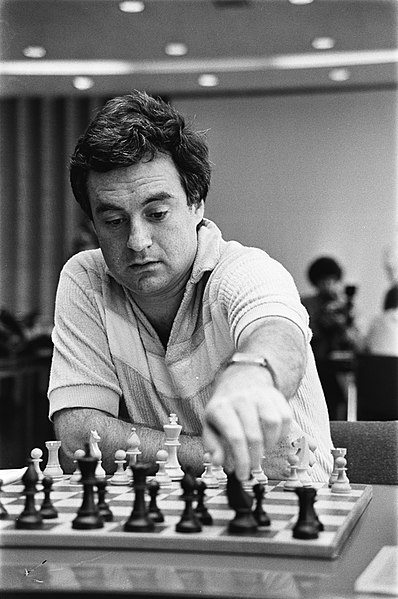
“Gennadi Sosonko was born in Troitsk in the Chelyabinsk region and learned to play chess at the age of ten in Leningrad, to which his family returned after the war. He trained in the Pioneers’ Palace, where he was mentored by Vladimir Zak, Vladimir Kirillov, Vasily Byvshev and Alexander Cherepov. Later he was taught by Semyon Furman in the Chigorin Chess Club. Genna emigrated from the USSR in 1972 and settled in the Netherlands. Genna became an international master in 1974 and a grandmaster in1976. He played for the Netherlands from 1974; in eleven Olympiads he had the superb overall score of +28 -4 =64. In the 1990s and 2000s, he was the Dutch team captain. Genna Sosonko is a two-time Dutch champion (1973 and 1978), a two-time winner of the tournament at Wijk aan Zee (1978 and 1981), winner of tournaments in Barcelona and Lugano in 1976, Nijmegen in 1978 and Polanica-Zdrój in 1993, and a prizewinner in Tilburg, New York, Bad Lauterberg, São Paulo, London and Reykjavik. From 1975 to 1982 he was one of the top twenty players in the world, achieving his highest rating of 2595 in January 1981. He has made a significant contribution to opening theory, especially to his favourite Catalan. In 2004 he stopped competing to focus on journalism and literature. He is the author of wonderful memoirs which were published in several languages. In recent years he has often worked as a commentator on tournaments featuring the world’s leading grandmasters, describing their battles in English, Dutch and Russian.”
Anyone with an interest in chess culture will be aware that Genna Sosonko has published a number of collections of essays on a variety of chess topics over the years.
More recently, he’s written three books of memoirs concerning Smyslov, Bronstein and Korchnoi, which received mixed reviews here and elsewhere. Now, published for the first time by Thinkers Publishing, Sosonko returns with another essay collection.
A look at the topics covered will give you a pretty good idea as to whether or not this book is for you.
The first five chapters are broadly historical. Chapter 1 is about the history of pre-arranged draws. Chapter 2 takes as its starting point a recent discovery from the KGB archives: a 1950 review by Vasily Panov of a Keres book on open games.
P. Keres couldn’t handle this task. What’s worse is that he used the platform offered for the purposes of unbridled glorification of foreign theoreticians, up to and including Nazi hirelings and those greatest of traitors of the Soviet people, the theoretical efforts of which don’t present any value whatsoever.
And so on, for two pages. Sosonko puts this into historical perspective and tells us a lot more about Panov.
Chapter 3 concerns, in general, the difficulties Soviet players faced in travelling abroad. Chapter 4 is about Sosonko’s experiences seconding Korchnoi in his 1971 Candidates match against Petrosian. In Chapter 5 he recalls buying a collection of Korchnoi’s possessions at an auction because he particularly wanted an unused plane ticket from 1976: unused because Viktor decided to remain in the West rather than return from the Netherlands to the Soviet Union.
The rest of the book is mostly devoted to pen pictures of a variety of players, mostly well known to Sosonko.
Chapter 6 is about Igor Ivanov (1947-2005), a Soviet émigré who defected to Canada and then moved to the United States. Ivanov was an exceptionally talented player whose life was blighted by his addiction to alcohol. There are some great stories here. In 1985 he won the Canadian Closed and Open Championship at the same time. They were taking place in different rooms in the same venue and he’d make a move in one tournament, then run to the other room to make another move. Sosonko clearly liked Ivanov and treats his problems with sympathy here, although you might find his tendency to psychoanalyse his subjects (something he does in all his books) rather annoying.
Sosonko also demonstrates a few of Ivanov’s games, such as this.
Another Soviet émigré, Leonid Shamkovich (1923-2005), is featured in Chapter 7. This is a rather shorter chapter: perhaps Sosonko knew him less well than Ivanov, and we don’t get to see any of his games.
Chapter 8 is very different indeed: Everyone’s Favourite Uncle, Arnfried Pagel. Unlike Sosonko’s other subjects, he wasn’t a strong player, but his story is rather remarkable and one that I was unaware of, so I was very interested to find out more.
Pagel was a German born concrete magnate and rather weak amateur chess player who moved to the Netherlands where he sponsored a very strong chess team, the King’s Club, in the early 1980s, recruiting a lot of grandmasters, many of whom were Soviet émigrés, to play for him. After a few years the Dutch Tax and Customs Administration became suspicious of his financial dealings: Pagel ended up bankrupt and in prison. He later spent seven years in prison in England after one of his shipments there was found to contain drugs.
This is a highly entertaining chapter, and one with some salutary lessons concerning chess sponsorship. You might consider the book worth buying for this alone.
Chapter 9 is the longest – and saddest – chapter of the book. It tells the story of Yakut IM Sergey Nikolaev, who was born in 1961, and was murdered in 2007 by a gang of teenage neo-Nazi thugs because of his Asian appearance. This is a fine tribute to a much-loved man with a complex personality, at the same time both reclusive and searching for recognition. It’s also a savage indictment of racism and bigotry in today’s Russia. Again, you may well think this chapter is worth the price of the book.
And yet, as so often in Sosonko’s works, it would have been enlivened by a few games so that we could see how he played chess as well as learning about him as a person.
Here’s one example of his play.
Chapters 10 and 11 are short chapters about GMs Yuri Razuvaev (1945-2012) and Viktor Kupreichik (1949-2017). We do get to see a few of the latter’s games, such as this.
Chapter 12 is a brief look at Mark Taimanov, which brings us on to the last three chapters, which give the impression they might have been added to sell the book. Their subjects: Karpov, Kasparov and Carlsen.
There’s a lot to admire here. Sosonko, as always, writes beautifully and knows how to manipulate his readers’ emotions. He’s at his best when writing about lesser-known players, and, for me, the highlights are the chapters on Pagel and Nikolaev. The book is well illustrated with many, often poignant, photographs which add to the book enormously. If you’ve read and enjoyed this author’s previous collections of essays you’ll want to add this to your bookshelves.
At the same time, I’d have liked some more games. It seems rather arbitrary that only two of the chapters include examples of their subjects’ play. Apart from adding value to the book, they’d help to flesh out the personalities of the players involved.
A casual reader might, understandably, see it as a rather random collection of articles with no very obvious coherent theme. To appreciate it fully you need to put it within the context of Sosonko’s other writings.
If you’re only looking for books which will improve your rating, this isn’t the book for you, but if you have a genuine interest in chess culture you might want to give it a try, and then move on to the author’s previous essay collections.
There’s a very strange mistake at the start of the book. The games, few as they are, use figurine notation and the publishers decided to print a table of piece letters and their equivalent figurine. However, the letters, rather than the figurines, appear in both columns. There are also a few typos but, by and large, the production values are good.
Not for everyone, then, but if the content appeals, you’ll enjoy this book.
Richard James, Twickenham 12th November 2021

Book Details :
- Softcover: 260 pages
- Publisher: Thinkers Publishing; 1st edition (5 July 2021)
- Language: English
- ISBN-10:9464201193
- ISBN-13: 978-9464201192
- Product Dimensions: 16.99 x 2.21 x 23.6 cm
Official web site of Thinkers Publishing


